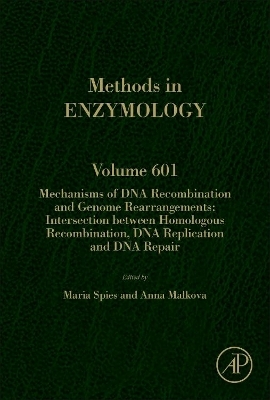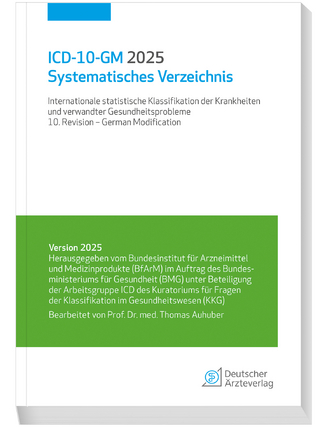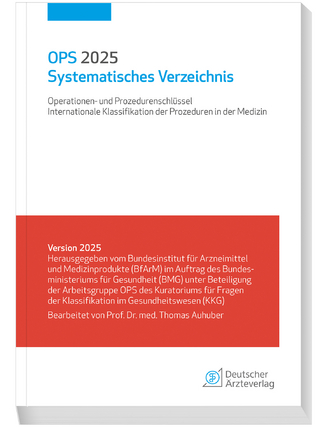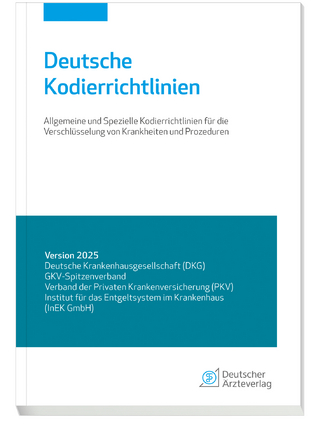
Mechanisms of DNA Recombination and Genome Rearrangements: Intersection Between Homologous Recombination, DNA Replication and DNA Repair
Academic Press Inc (Verlag)
978-0-12-813979-0 (ISBN)
Homologous genetic recombination remains the most enigmatic process in DNA metabolism. The molecular machines of recombination preserve the integrity of the genetic material in all organisms and generate genetic diversity in evolution. The same molecular machines that support genetic integrity by orchestrating accurate repair of the most deleterious DNA lesions, however, also promote survival of cancerous cells and emergence of radiation and chemotherapy resistance. This two-volume set offers a comprehensive set of cutting edge methods to study various aspects of homologous recombination and cellular processes that utilize the enzymatic machinery of recombination. The chapters are written by the leading researches and cover a broad range of topics from the basic molecular mechanisms of recombinational proteins and enzymes to emerging cellular techniques and drug discovery efforts.
Graduate of Peter the Great St. Petersburg Polytechnic University, Russia (1996 MS diploma with honors (equivalent of cum laude) in physics/biophysics) and Osaka University, Japan (2000 PhD in biological sciences), Dr. Maria Spies is an Associate Professor of Biochemistry at the University of Iowa Carver College of Medicine. Spies’ research career has been focused on deciphering the intricate choreography of the molecular machines orchestrating the central steps in the homology directed DNA repair. Her doctoral research supported by the Japanese Government (MONBUSHO) Graduate Scholarship provided the first detailed biochemical characterization of archaeal recombinase RadA. In her postdoctoral work with Dr. Steve Kowalczykowski (UC Davis) supported by the American Cancer Society, Spies reconstituted at the single-molecule level the initial steps of bacterial recombination and helped to explain how this process is regulated. Spies’ laboratory at the University of Iowa emphasizes the molecular machinery of homologous recombination, how it is integrated into DNA replication, repair and recombination (the 3Rs of genome stability), and how it is misappropriated in the molecular pathways that process stalled DNA replication events and DNA breaks through highly mutagenic, genome destabilizing mechanisms. Her goal is to understand, reconstitute and manipulate an elaborate network of DNA recombination, replication and repair, and to harness this understanding for anticancer drug discovery. The Spies lab utilizes a broad spectrum of techniques from biochemical reconstitutions of the key biochemical reactions in DNA recombination, repair and replication, to structural and single-molecule analyses of the proteins and enzymes coordinating these reactions, to combined HTS/CADD campaigns targeting human DNA repair proteins. Work in Spies Lab has been funded by the American Cancer Society (ACS), Howard Hughes Medical Institute (HHMI), and is currently supported by the National Institutes of Health (NIH). She received several prestigious awards including HHMI Early Career Scientist Award and Margaret Oakley Dayhoff Award in Biophysics. She serves on the editorial board of the Journal of Biological Chemistry, and as an academic editor of the journal Plos-ONE. She is a permanent member and a chair of the American Cancer Society “DNA mechanisms in cancer review panel. Graduate of the St. Petersburg State University, Russia (1987 MS diploma with honors (equivalent of cum laude) in Genetics and 1993 Ph.D. in Genetics), Dr. Anna Malkova is an Associate Professor of Biology Department at the University of Iowa College of Liberal Arts and Sciences. Malkova’s research is focused on DNA repair mechanisms. She investigates the repair of double-strand DNA breaks (DSBs), the most lethal type of DNA lesions. Using a dependable and powerful model system in yeast, where a single DSB is initiated by a site-specific HO endonuclease, she successfully demonstrated that imprecise or faulty repair of DSBs leads to structural genomic variations including mutations, copy number variations (CNVs), and chromosomal rearrangements similar to those that cause genetic diseases and cancer in humans. She has a longstanding interest in break-induced replication (BIR), a DSB repair pathway that repairs so-called one-ended DNA breaks, similar to those produced at eroded telomeres and by collapsed replication forks. In her postdoctoral work with Dr. James Haber (Brandeis University), she was among the first who identified this mechanism in eukaryotes. Studies in Malkova’s laboratory provided important insights into the mechanism of BIR, which was found to be fundamentally different from the mechanism of S-phase DNA replication. In particular, it was discovered that BIR is carried out by a migrating bubble rather than by a replication fork, and leads to conservative inheritance of newly synthesized DNA. This unusual molecular mechanism explained bursts of genetic instability that were observed in association with BIR, and that were similar to those associated with cancer and other diseases rooted in genetic instability. Work in Malkova’s lab is supported by the National Institutes of Health (NIH). Anna serves as a member to the Cancer Etiology study section of NIH/NCI.
1. Using the Flp recombinase to induce site-specific nicks
Lotte Bjergbaek
2. Synthesis from D-loops
Wolf-Dietrich Heyer
3. Bacteriophage T4 system as a model for recombination/replication interface
Scott Morrical
4. Inducing and detecting mitotic DNA synthesis at difficult-to-replicate loci
Ian Hickson
5. Reporter system to study the RNA-DNA recombination
Francesca Storici
6. Assaying recombination and mutagenesis at DNA nicks
Nancy Maizels
7. Recovery of alternative end-joining repair products from Drosophila embryos
Mitch McVey
8. High-throughput analysis of DNA break-induced chromosome rearrangements by amplicon sequencing
Steven Roberts
9. Analysis of mutagenesis associated with recombination
Jim Haber
10. Investigation of break-induced replication in yeast
Anna Malkova
11. Dissecting the dual endo- and exonuclease activity of MRE11 (MRN) with small molecules
John Tainer and Davide Moiani
12. RAD52 inhibition
Ashley Spies
13. Structure-guided, fragment-based drug discovery against RAD51 recombinase: targeting a protein-peptide interface
Thomas Blundell
14. Molecular intermediates of recombination in meiosis (methods, like 2D, and others)
Neil Hunter
15. S1-seq method for mapping DSB resection endpoints
Scott Keney
16. Methods for studying the roles of the Sgs1-Top3-Rmi1 helicase/decatenase complex in meiotic recombination intermediate metabolism
Michael Lichten
17. Live cell imaging of heterochromatin repair in Drosophila cells
Irene Chiolo
18. Analysis of meiotic double-strand break initiation in mammals
Galina Petukhova and Dan Camerini-Otero
| Erscheinungsdatum | 31.03.2018 |
|---|---|
| Reihe/Serie | Methods in Enzymology |
| Verlagsort | San Diego |
| Sprache | englisch |
| Maße | 152 x 229 mm |
| Gewicht | 840 g |
| Themenwelt | Informatik ► Weitere Themen ► Bioinformatik |
| Naturwissenschaften ► Biologie ► Biochemie | |
| Naturwissenschaften ► Biologie ► Genetik / Molekularbiologie | |
| ISBN-10 | 0-12-813979-X / 012813979X |
| ISBN-13 | 978-0-12-813979-0 / 9780128139790 |
| Zustand | Neuware |
| Informationen gemäß Produktsicherheitsverordnung (GPSR) | |
| Haben Sie eine Frage zum Produkt? |
aus dem Bereich


